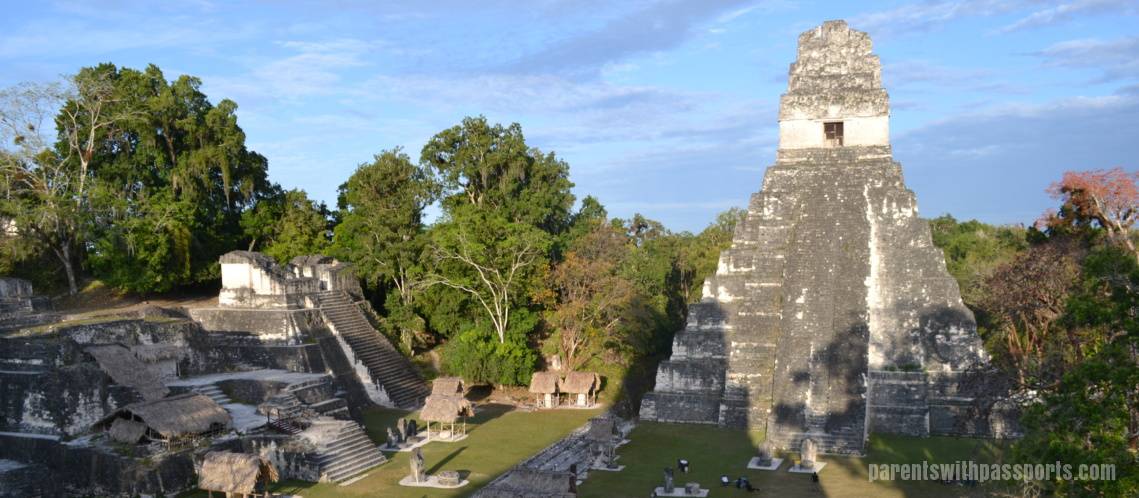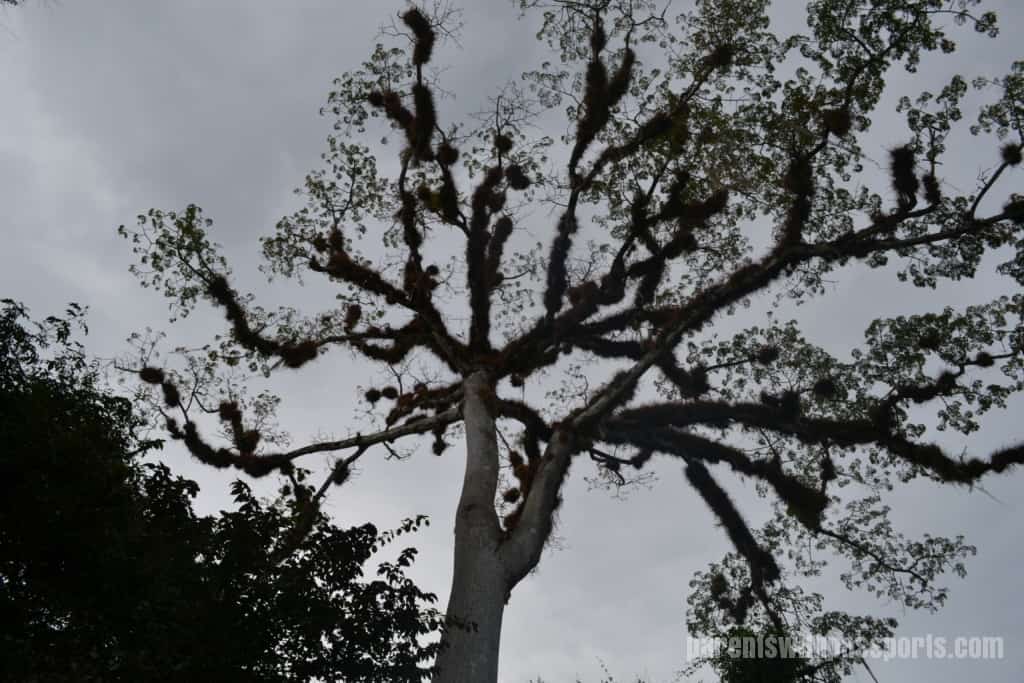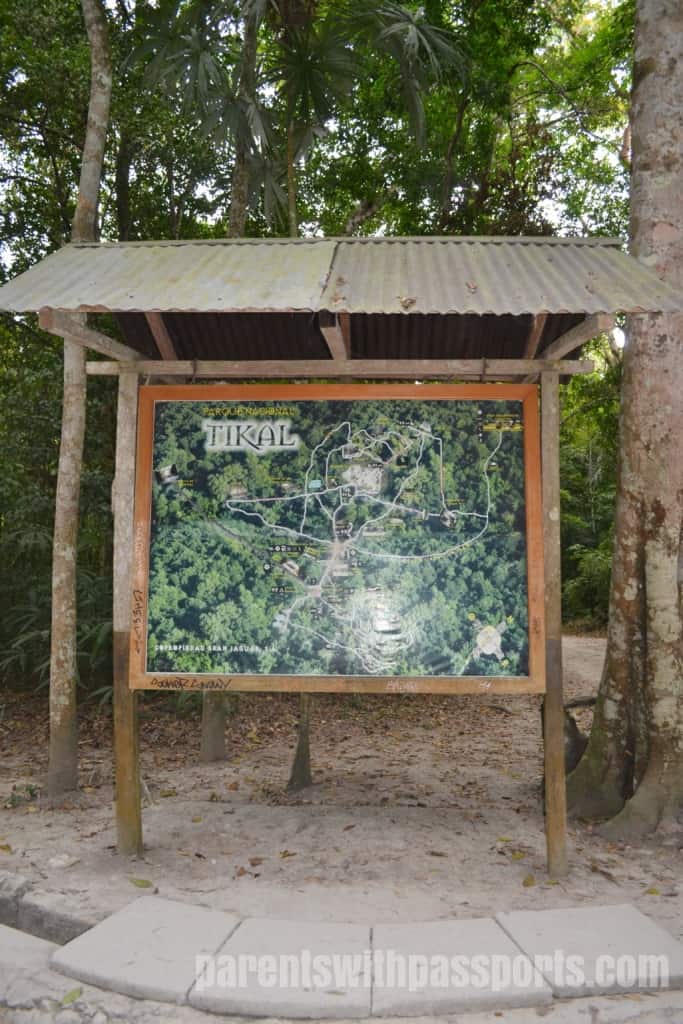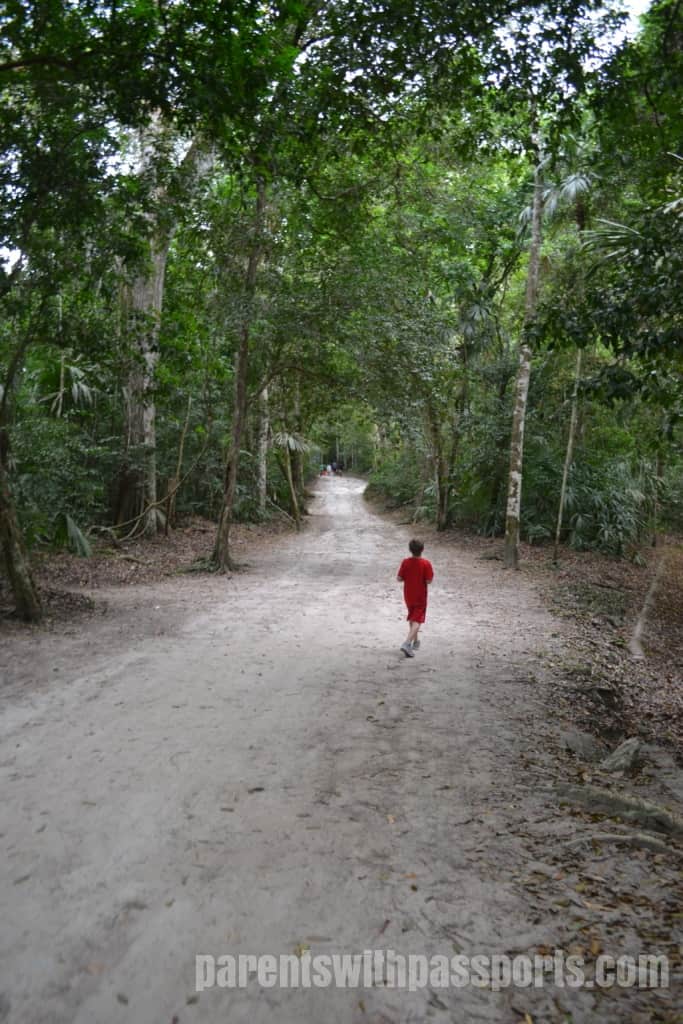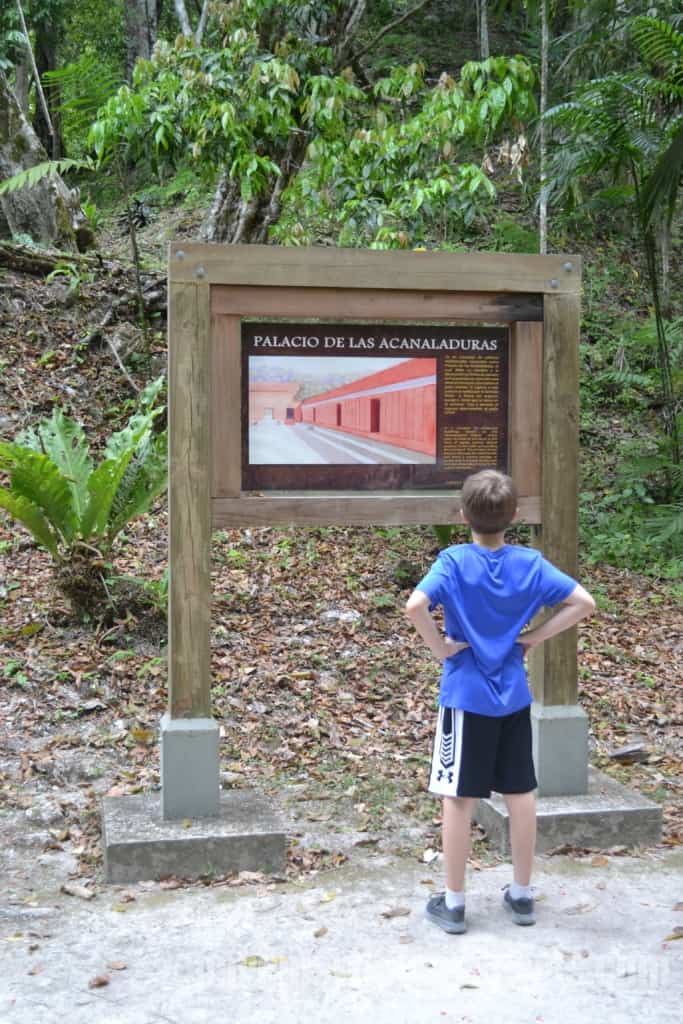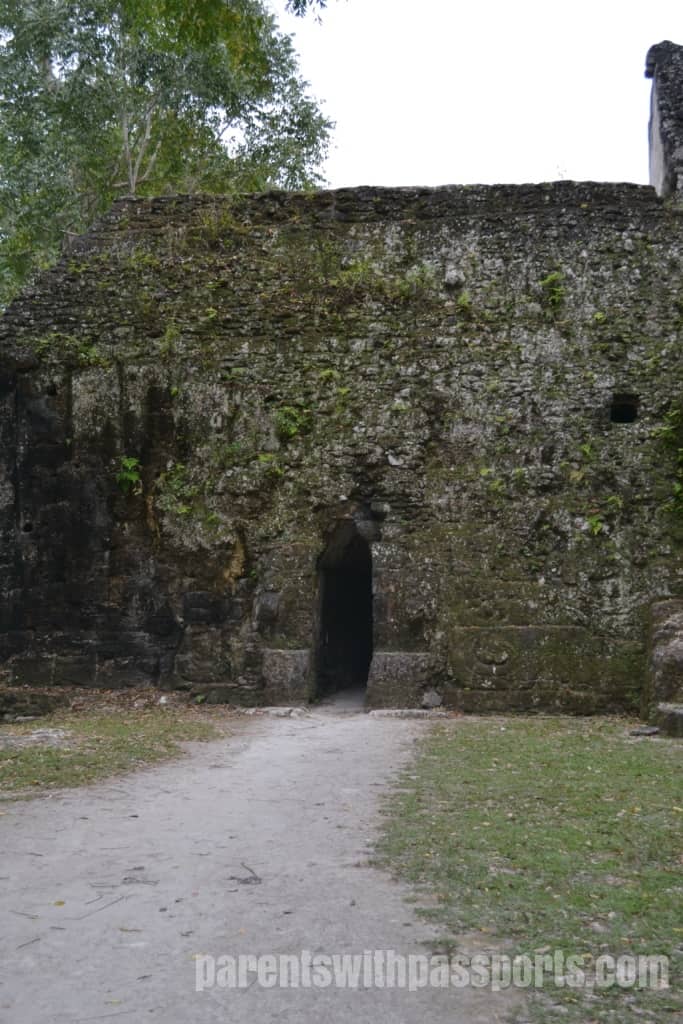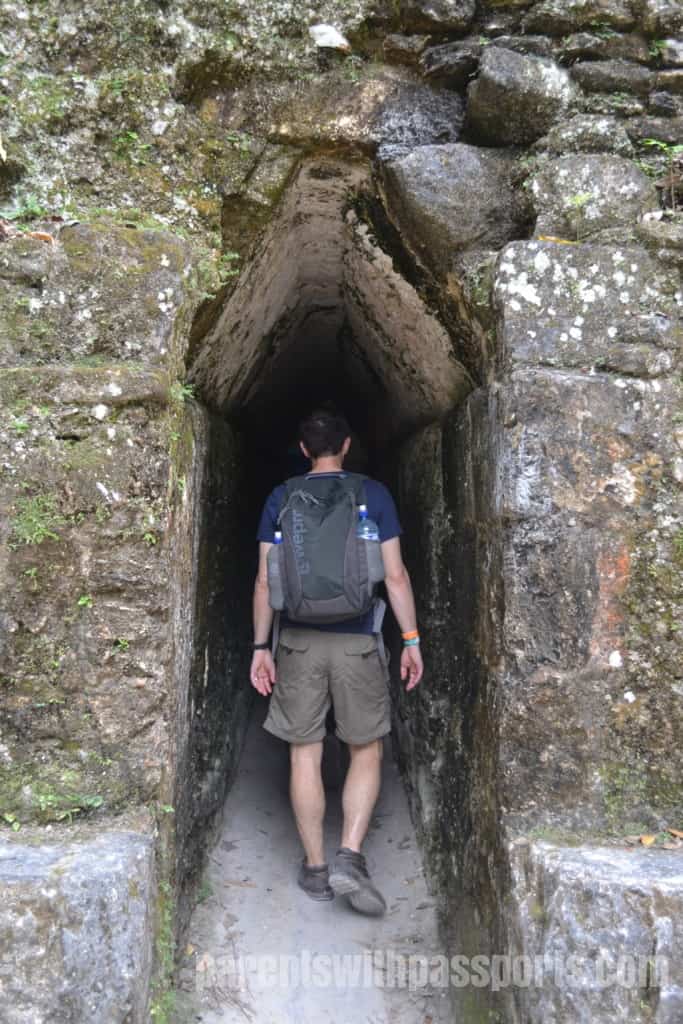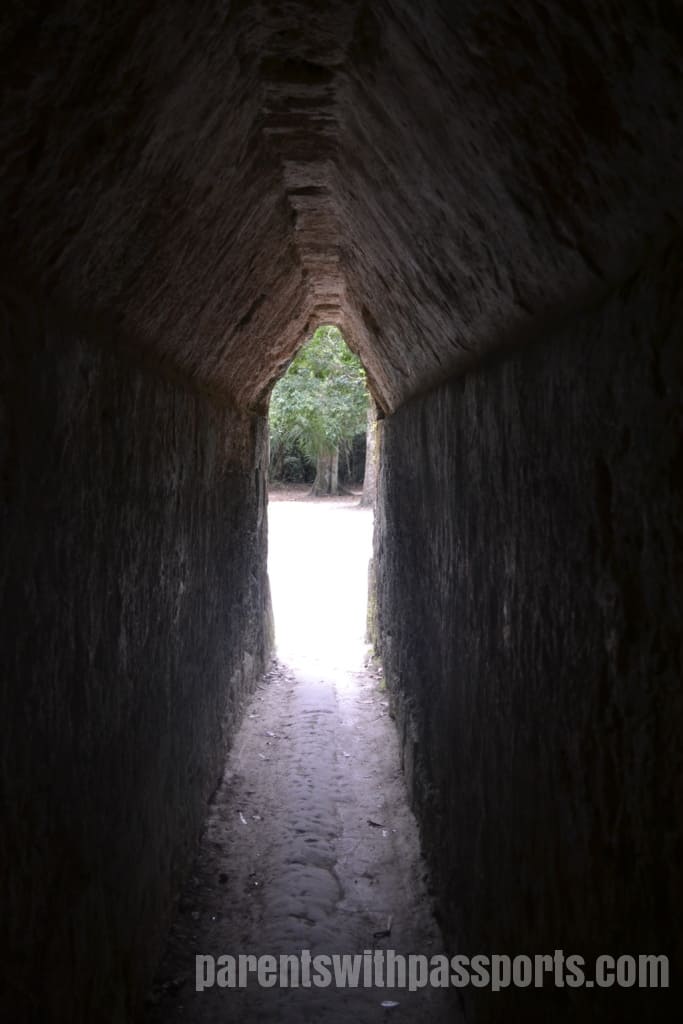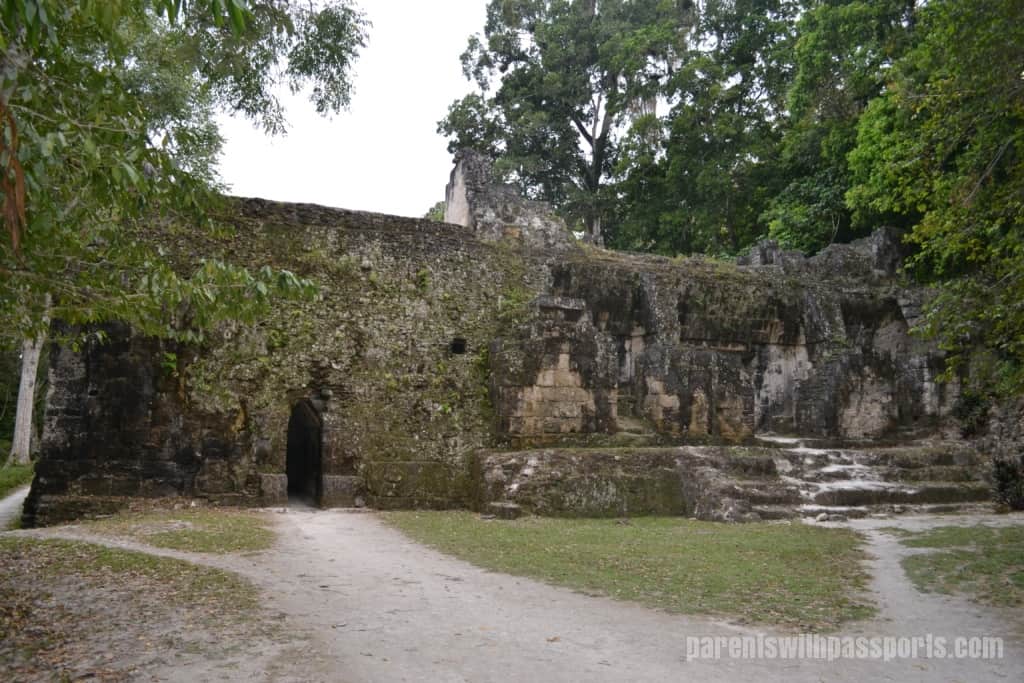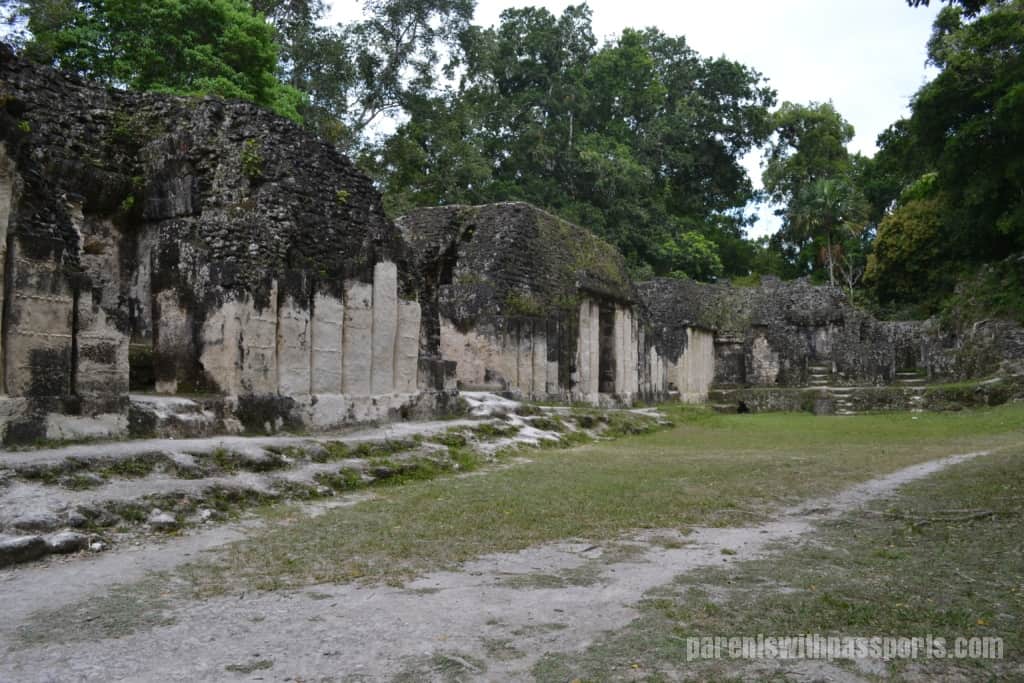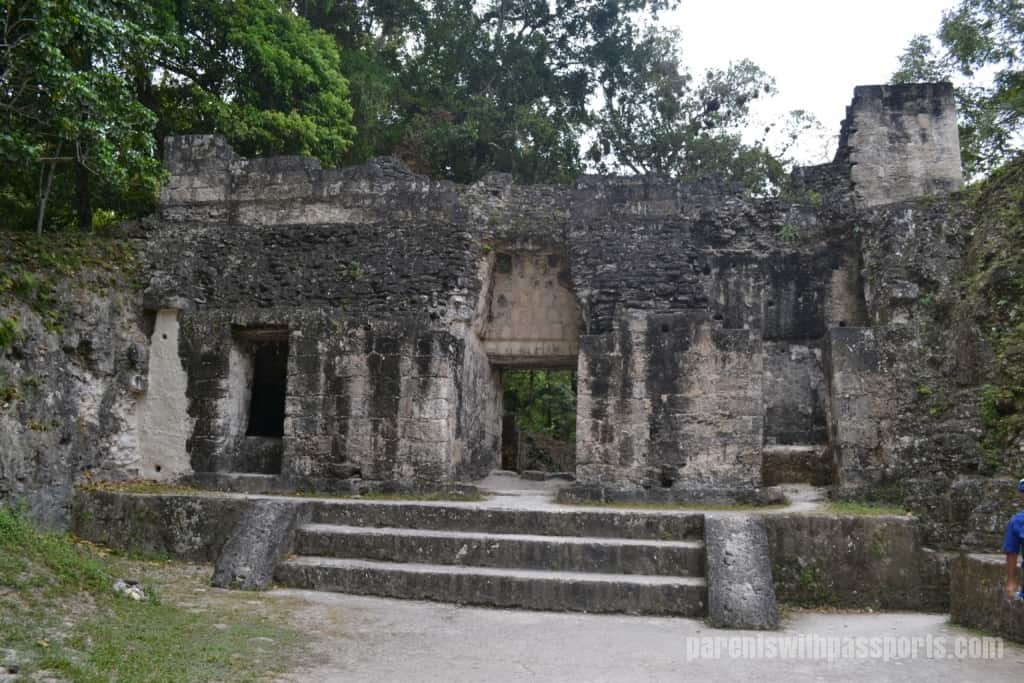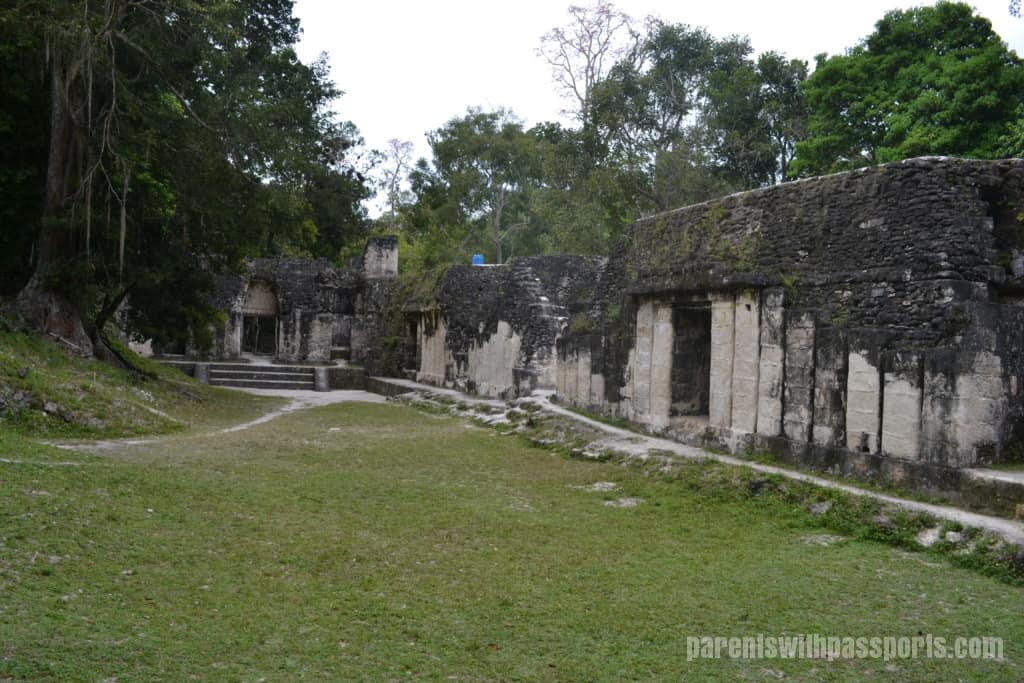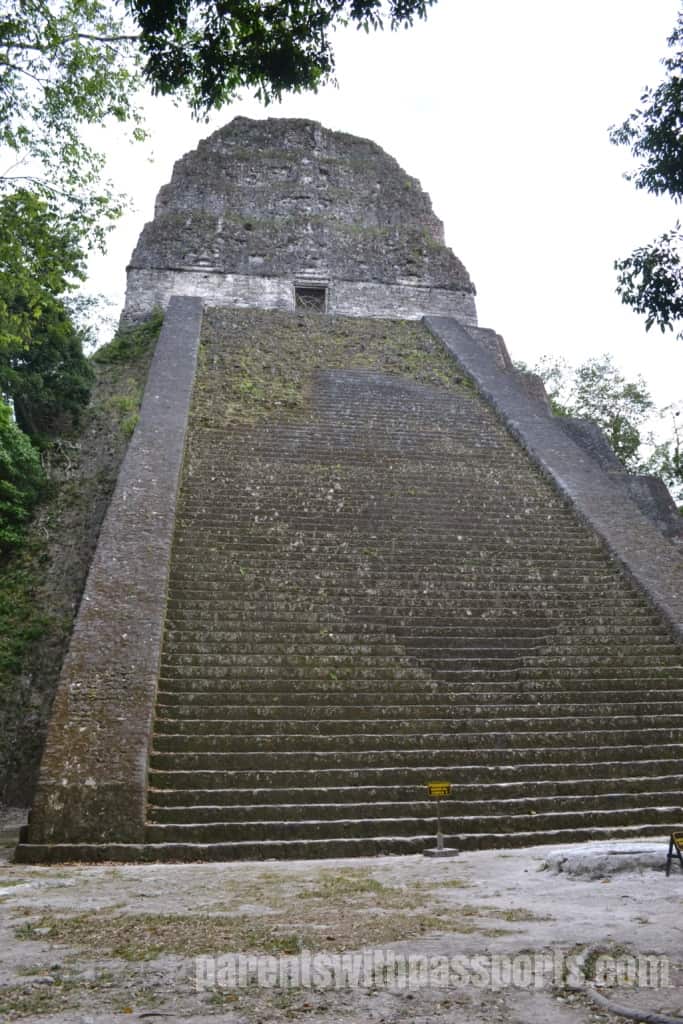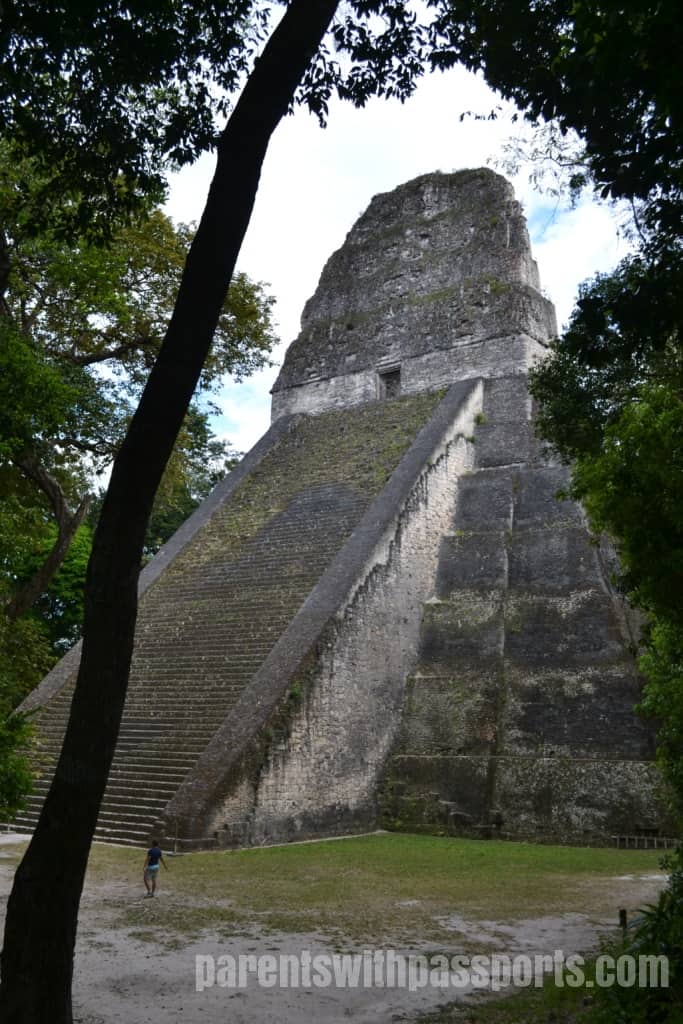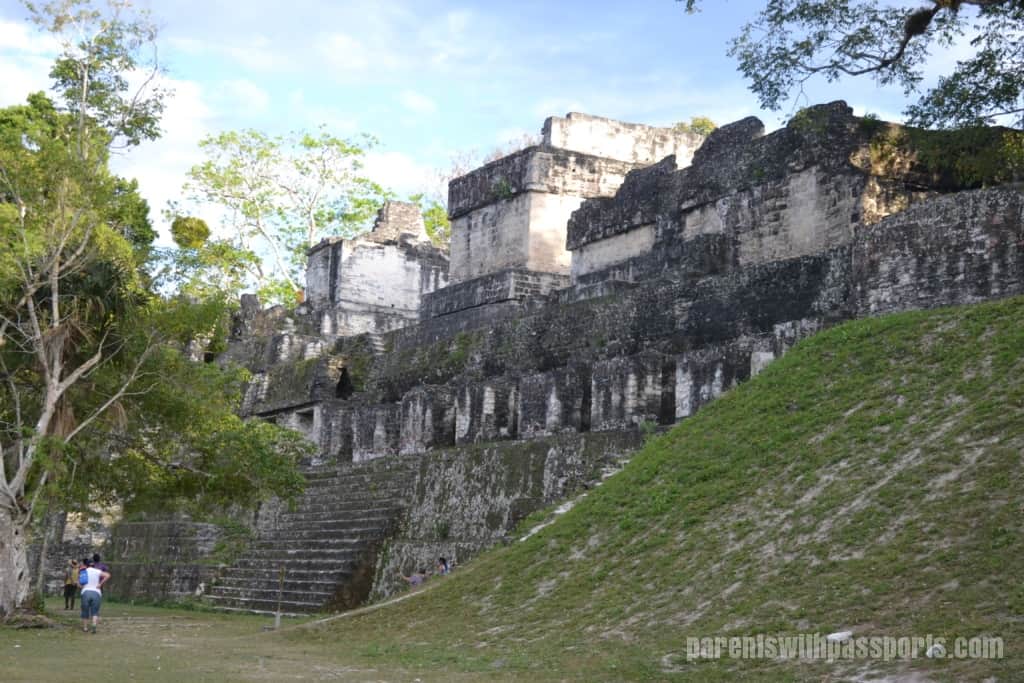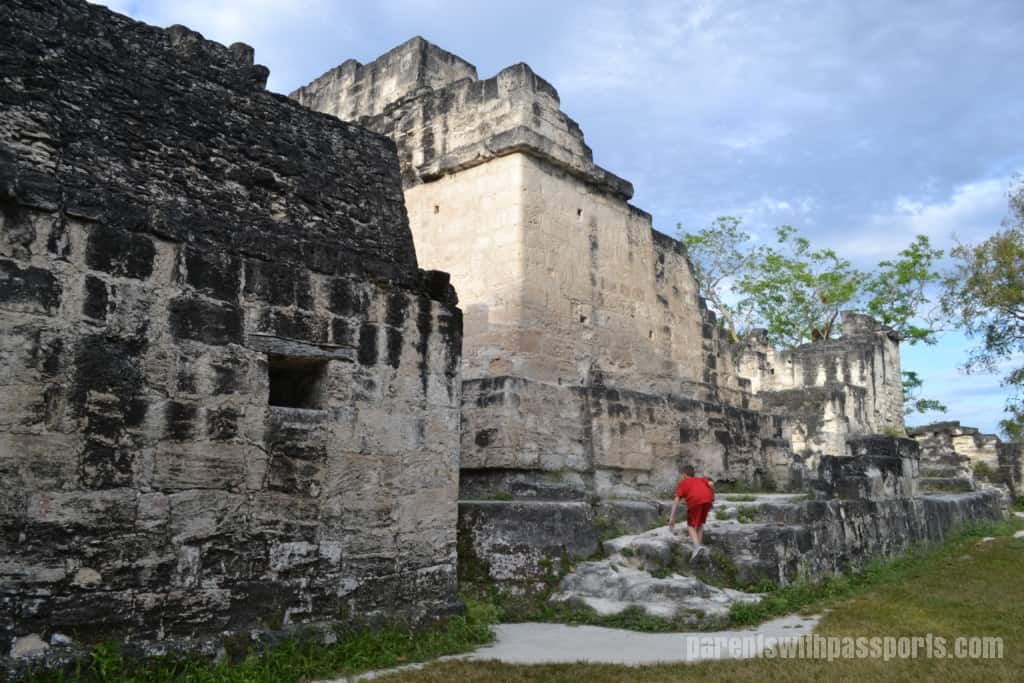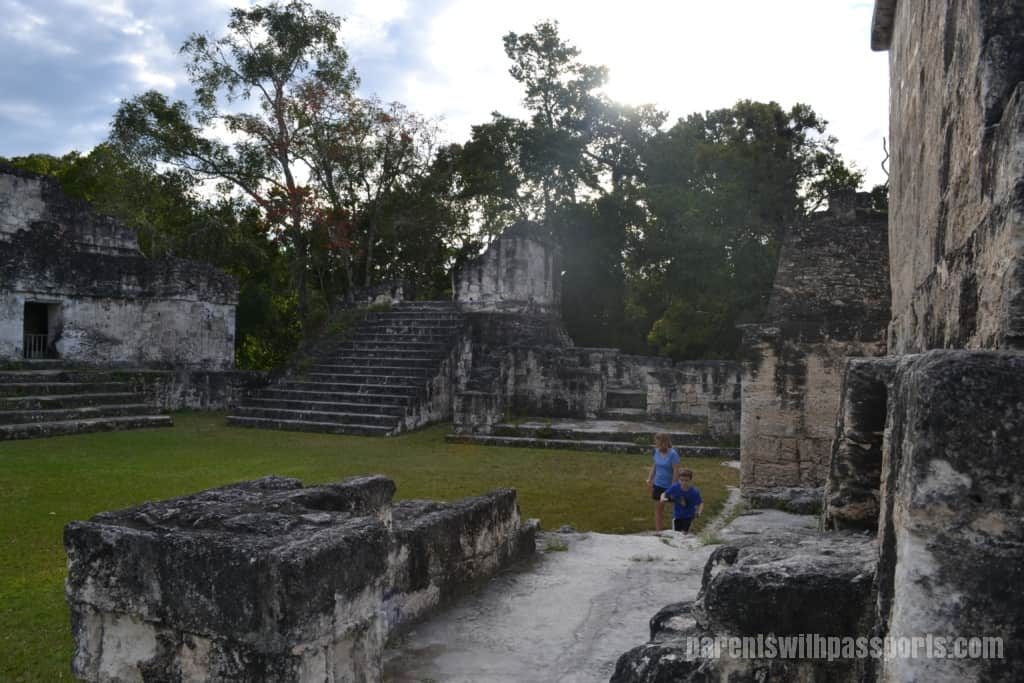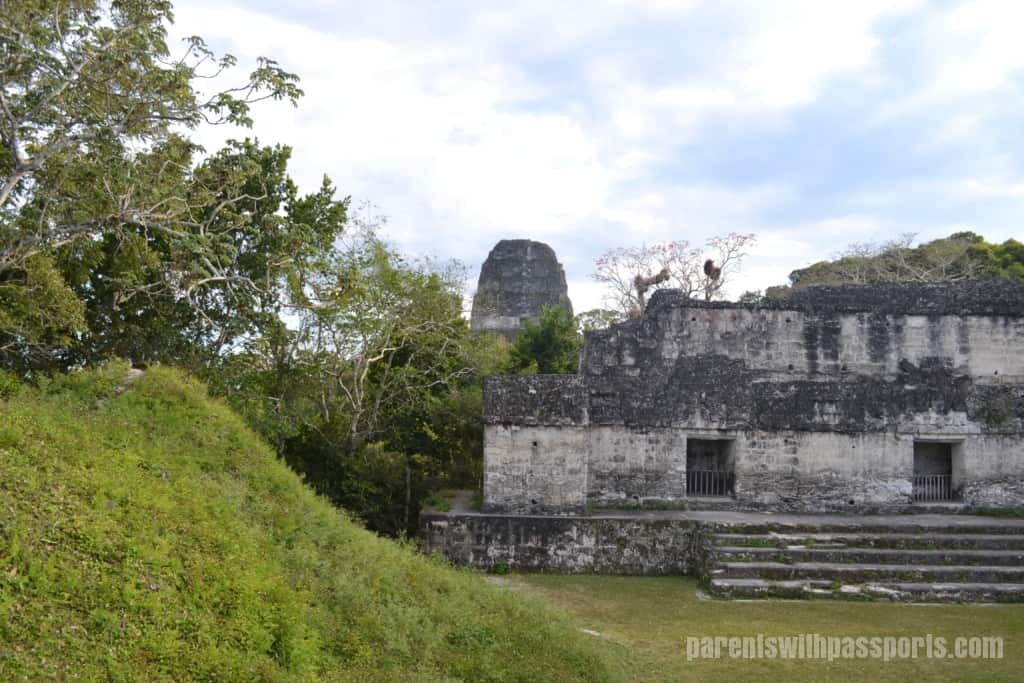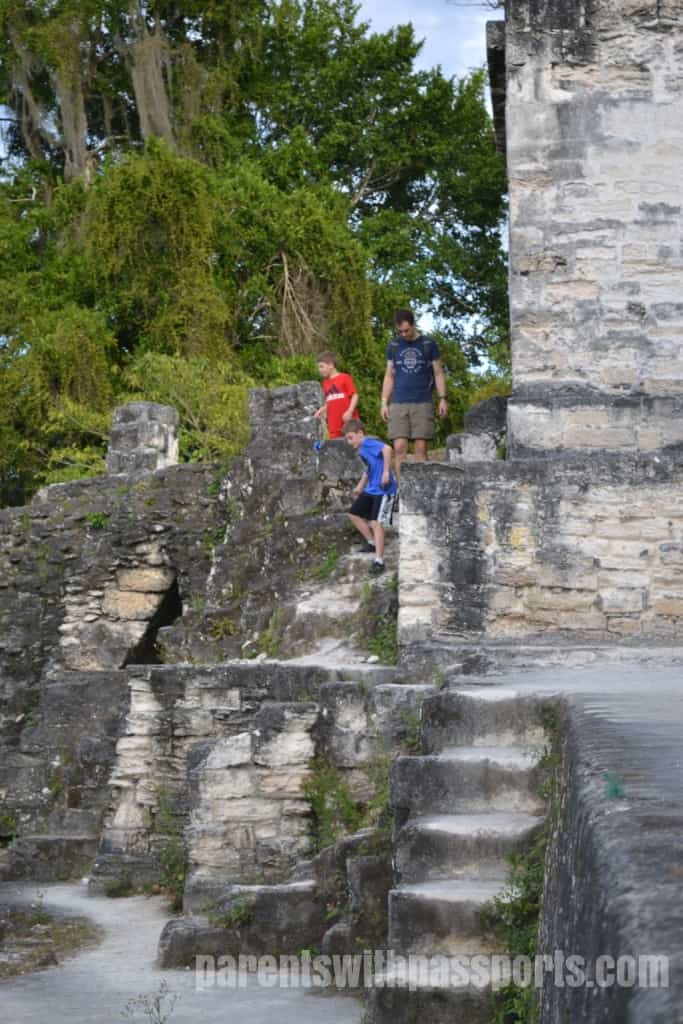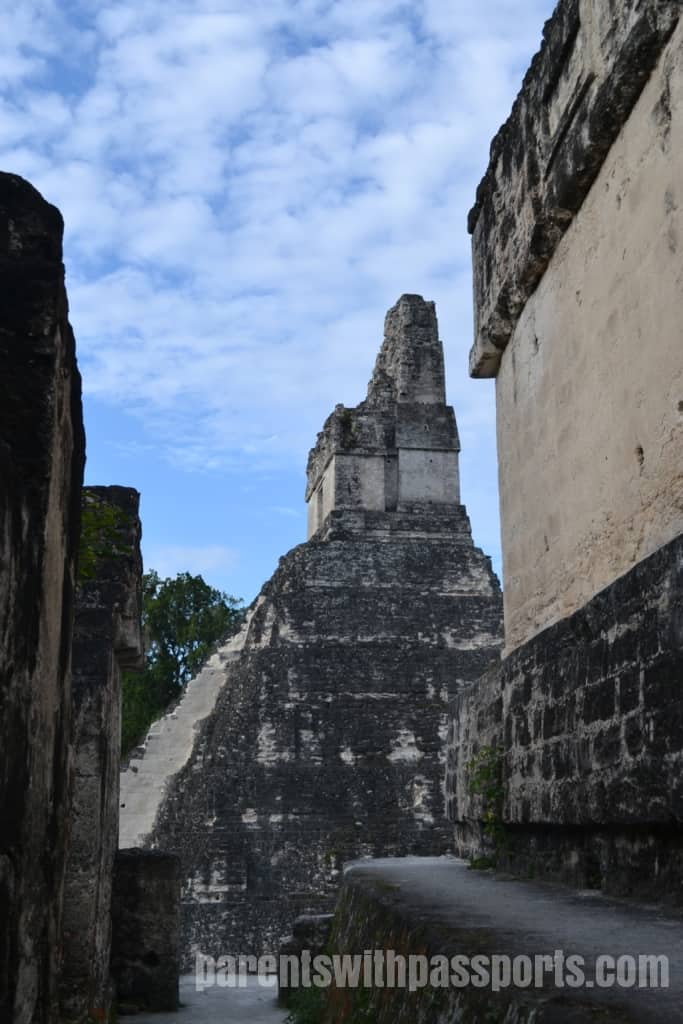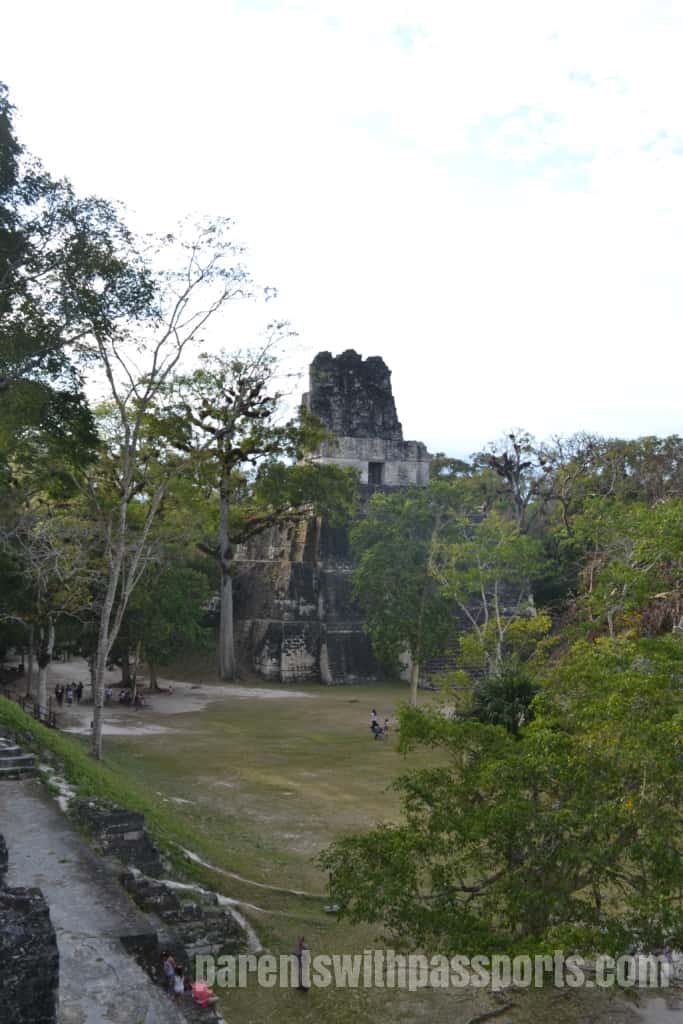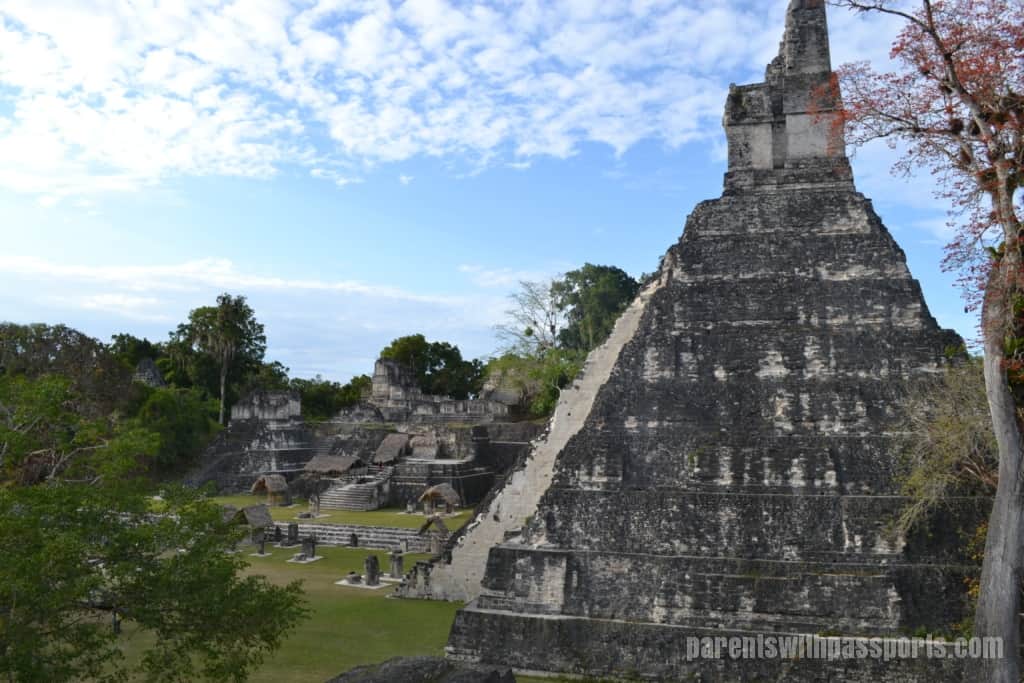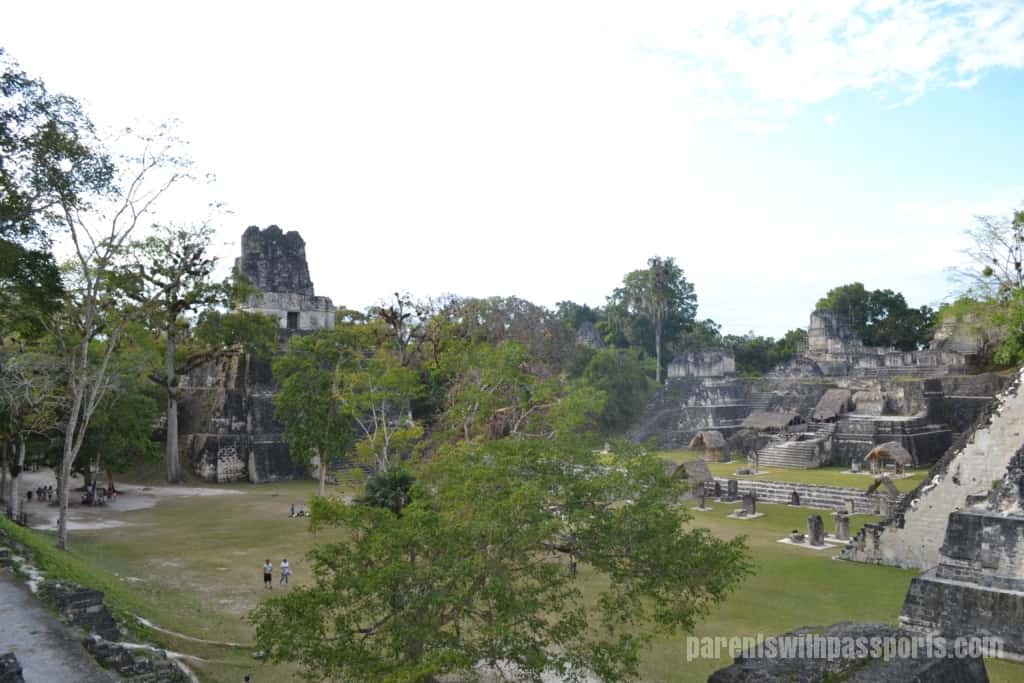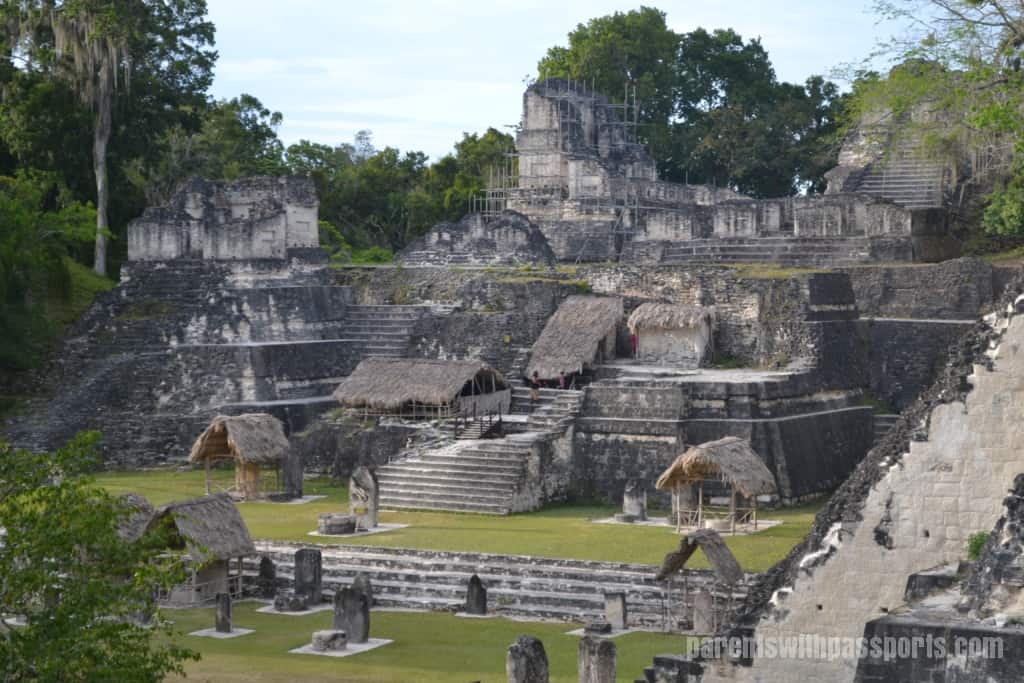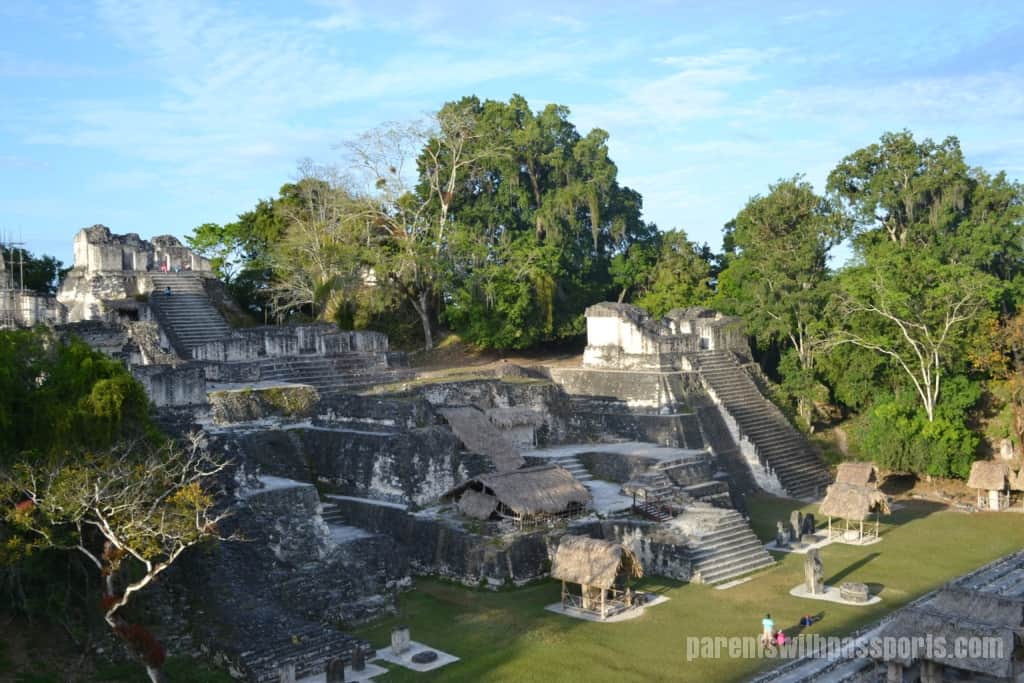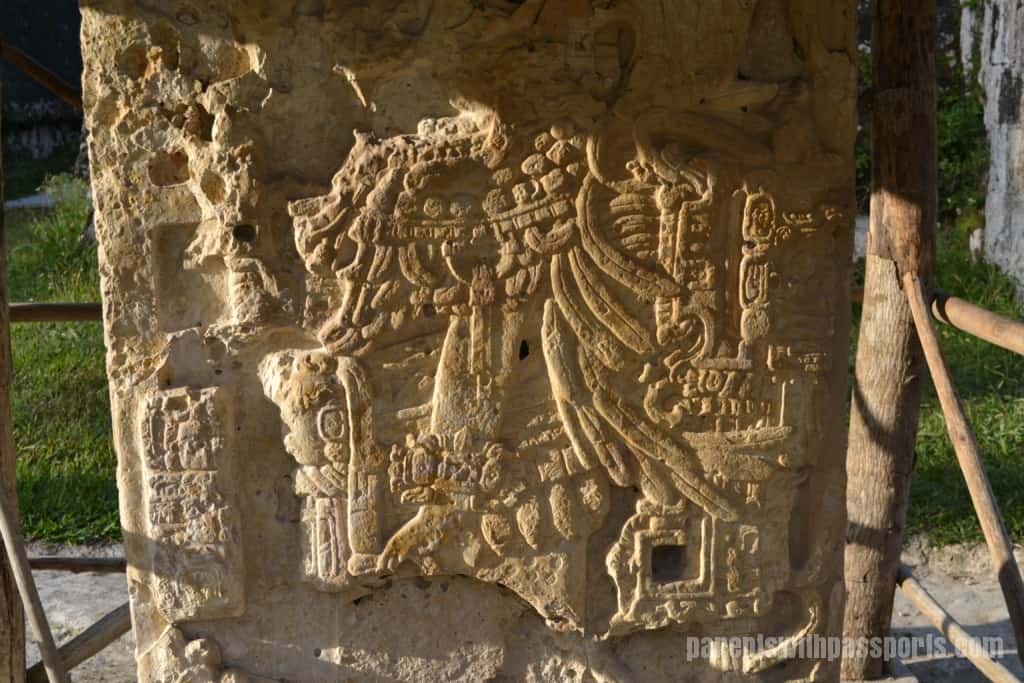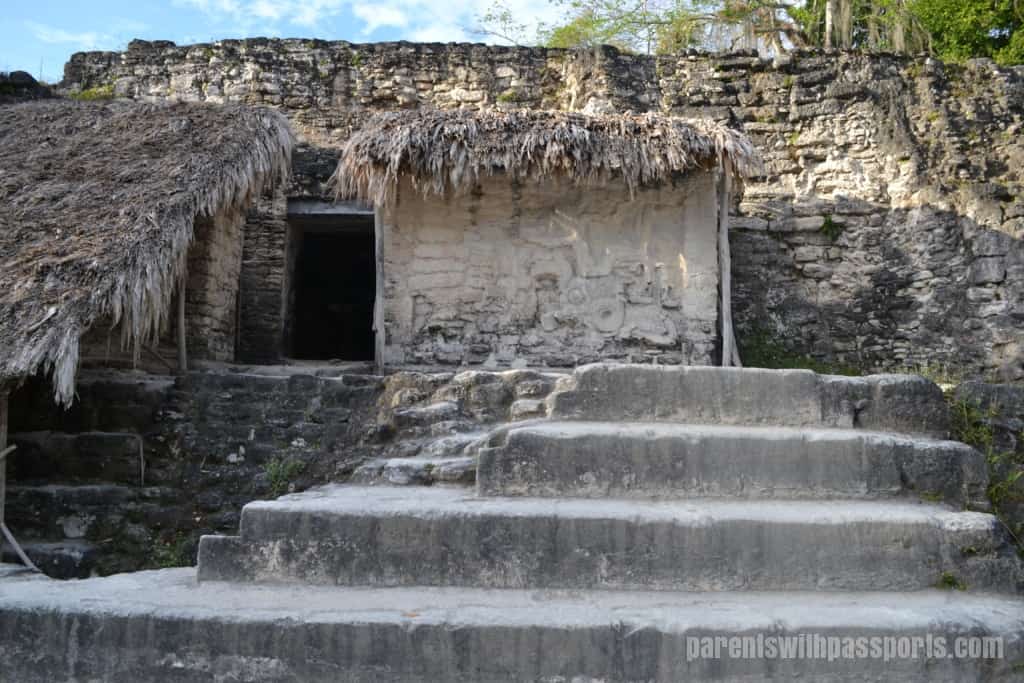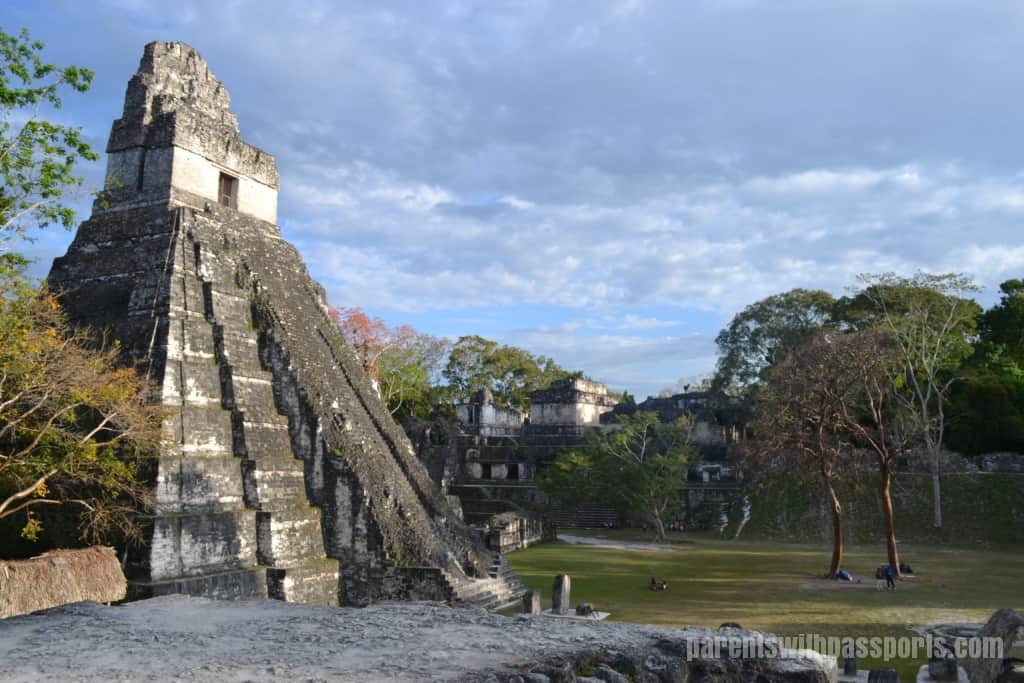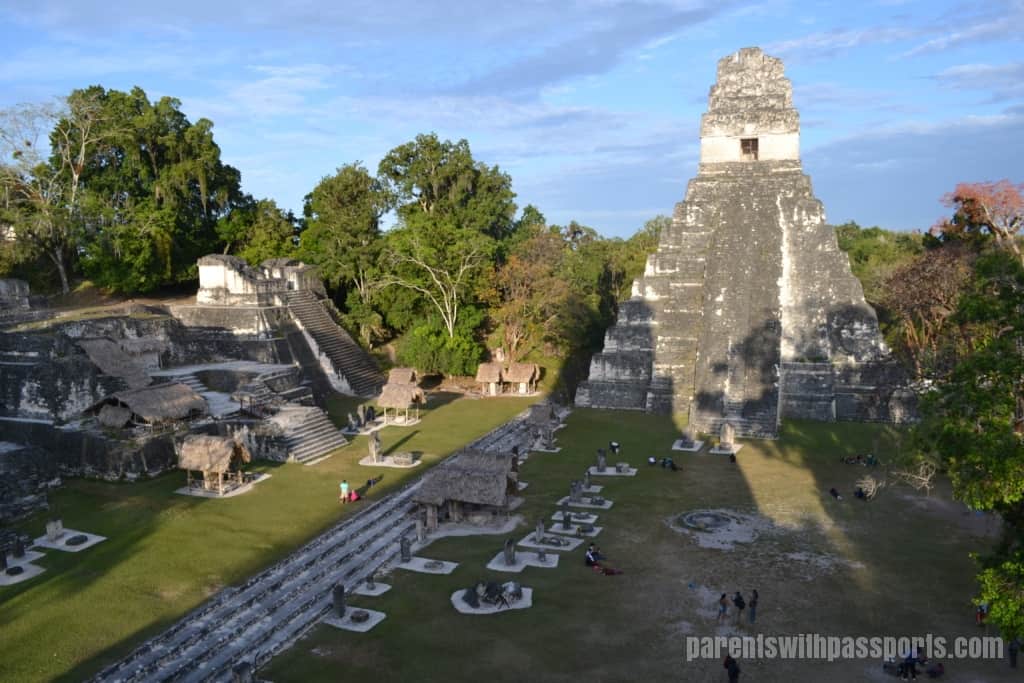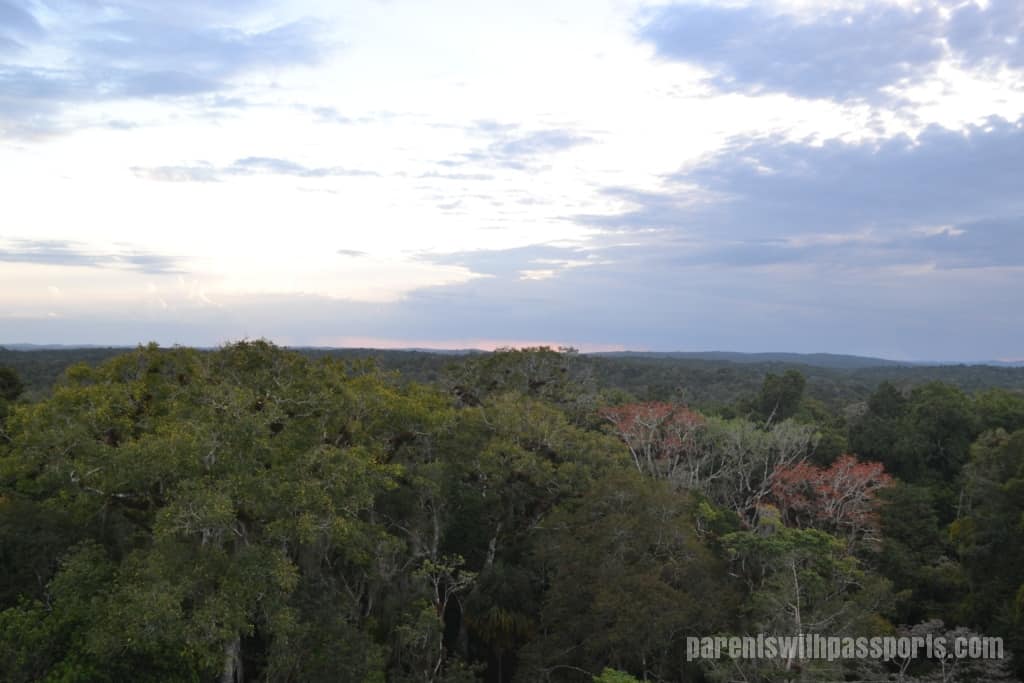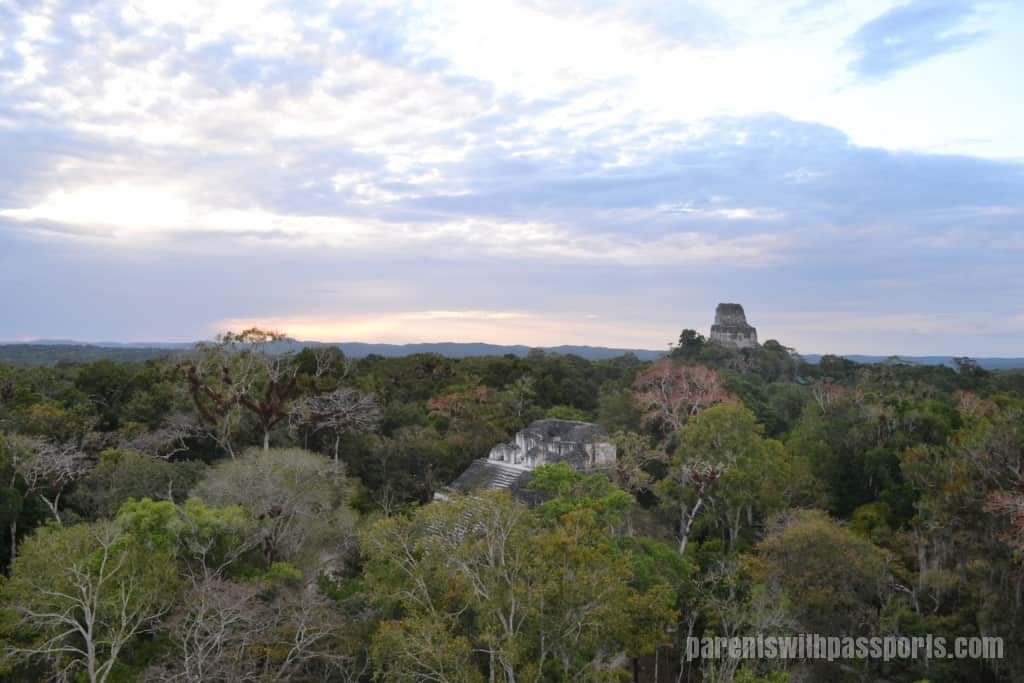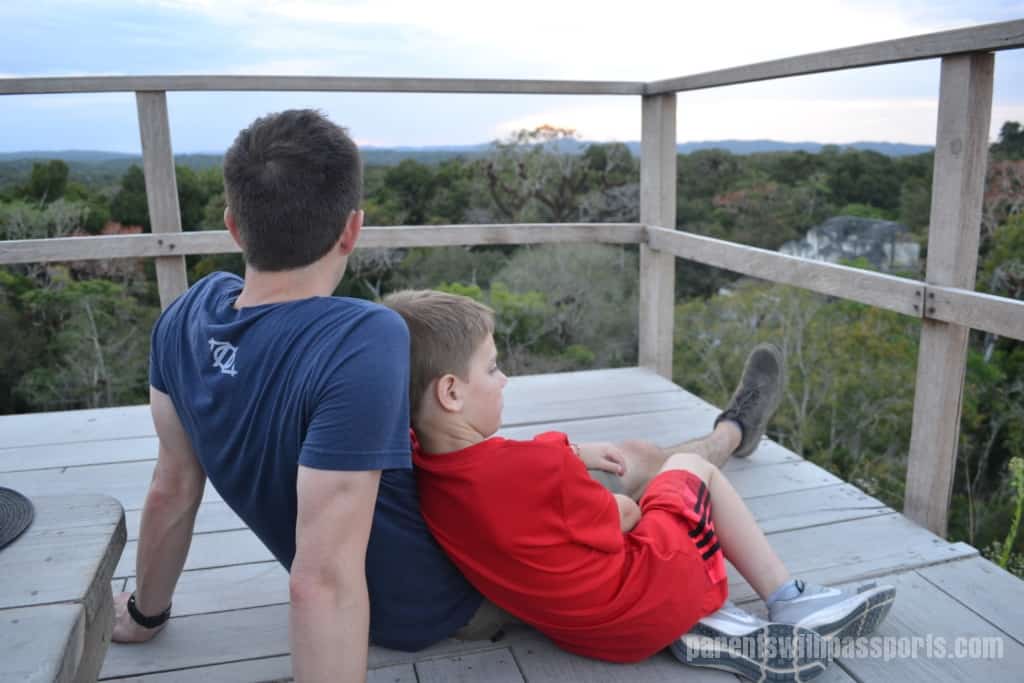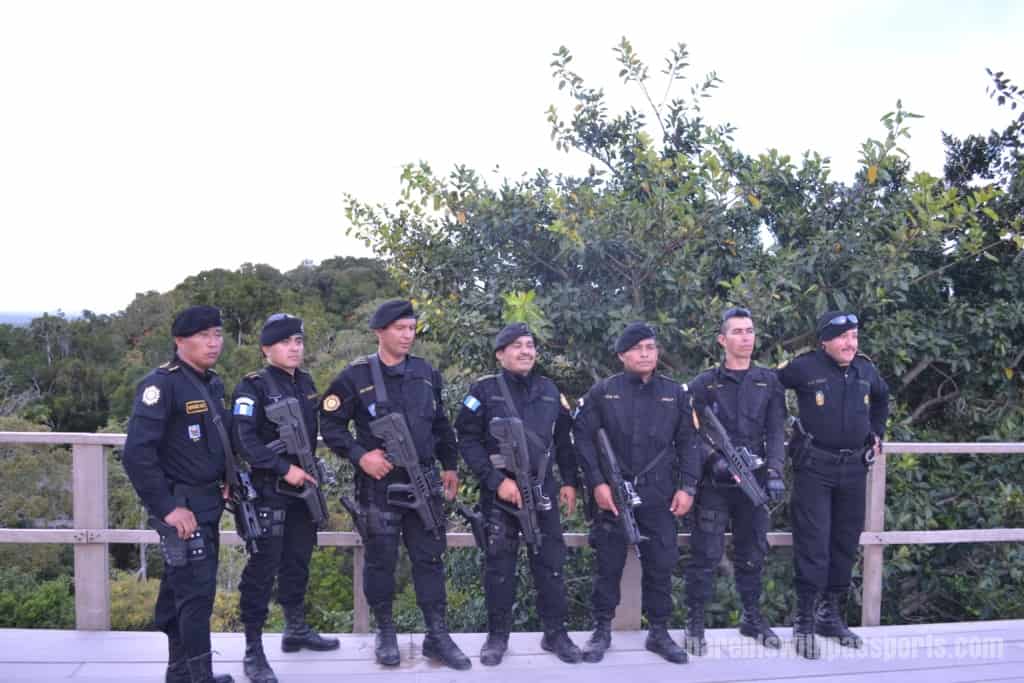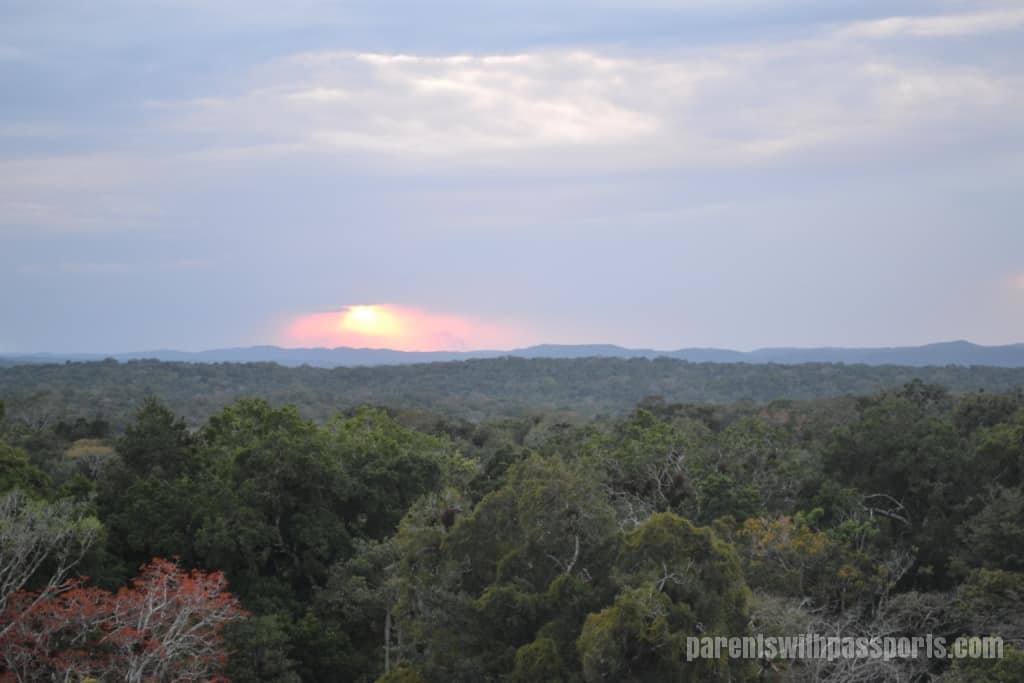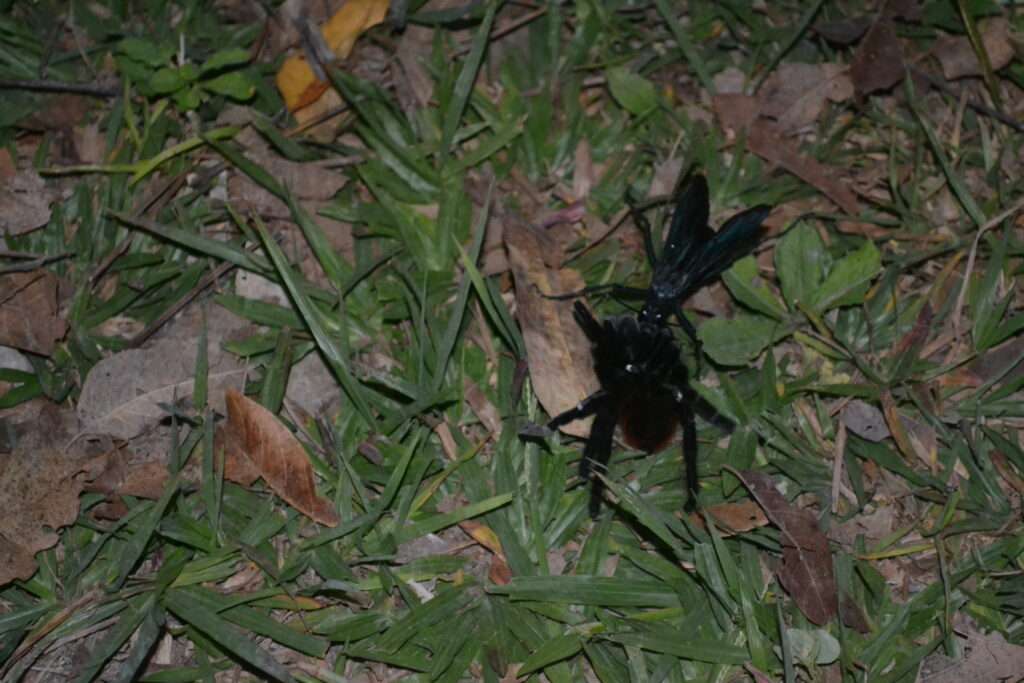I reassured him that everything would be ok. I told him we would get to eat soon and we had a really awesome tour guide lined up for the afternoon. We ordered our food and his mood was starting to lighten a little. Then I saw our tour guide and another guide walk into the restaurant. I quickly glanced at my watch and confirmed that we were still a few hours before our scheduled tour. I knew this had to be bad news.
And it was. Literally minutes after I had used our guide as a way to reassure RB that everything would be ok and we were going to have a great trip, she walked up and cancelled on us. She is an archaeologist and some of the sponsors of one of her projects were in town and needed to be taken on a tour. We had not booked a private tour for this afternoon and she didn’t think a family would mesh well with this group of adults. She offered a private tour with one of her colleagues instead at half price. We didn’t seem to have much choice so we accepted. I understood but was obviously disappointed. I had planned this entire trip around her being our guide. RB was distraught.
But a soda and a deck of cards to play solitaire with at the table started to bring him back around. Then the food arrived and he was back in good spirits. We finished our meal and were able to check-in to our room. We went back to the room to relax a little before our tour.
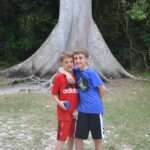
At 4:00, we met our new guide Andres outside the hotel lobby for our tour. We walked down to the park entrance, showed them our tickets, and got our wristbands indicating we could stay past 6pm. On the main path leading into the park, we passed a huge Ceiba (or kapok) tree, which is the national tree of Guatemala. It had a massive trunk, thick at the bottom with buttressed roots and extending over 200 feet tall with no branches until the top. The high branches formed an umbrella-like canopy with a unique fluffy look. The seed pods of the tree burst open when they mature, exposing a cottony fiber. The fibers are eventually blown off the tree, getting picked up and carried away by the wind to spread its seeds. But before they blow away, they make the tree branches look fluffy.
Andres explained to us that the Mayans consider the Ceiba tree to be the most sacred tree. The Mayans believe there are three levels of earth – the underworld (Xibalba), the middle world (earth inhabited by humans), and the upper world (heaven) – and that the tree represented these three levels through its roots, trunk, and branches.
We continued further down the path and came upon a large map of the park. It was immediately evident what a large site Tikal is. Covering over 220 square miles, Tikal was one of the largest Classic period Mayan cities. The map showed a large tree-covered area with paths cut through the jungle to reach the excavated structures. It was amazing to think that the jungle had completely swallowed up a city which once held 90,000 people and even more amazing to think that archaeologists were working every day to rediscover more and more of the city.
Andres led us first to Group G, also known as the Palacio de las Acanaladuras (Palace of the Vertical Columns). This was an extensively excavated area and believed to be the palace of one of Tikal’s master builders. The architecture was really unique in this complex. Columns and corbel-vaulted archways were the most prominent architectural features. The columns were visible on the building exteriors (hence the name Palace of Vertical Columns) and their white color made them stand out against the buildings. In the corbel-vaulted archways, the peaks were not rounded but were inverted stairways, giving them a triangular look at the top.
After plenty of time to explore this complex, we headed up the hill, following a trail through the jungle. We spotted both spider monkeys and toucans high up in the trees as we made our way to Temple V. Standing 187 feet high, Temple V is the second highest temple in Tikal. The main pyramid is made up of 7 levels, each with rounded corners. It is not known who inhabits the tomb of Temple V. You are not allowed to climb the many steps up Temple V but we walked all around it, admiring the structure from different angles.
From there we headed to the Great Plaza. The difference between this plaza and the other areas of Tikal we had visited was striking. The Great Plaza is a huge grassy area flanked by Temple I at one end, Temple II at the other, and the North and Central Acropolises on either side. Aide from the sheer number of structures, this plaza was different in the number of people. We had felt like we had the place practically to ourselves on our first two stops. But the Great Plaza was crawling with people. It was Easter weekend so most likely more crowded than it usually is at this time of day, but it was shocking to me that this many people were in the park and we had seen hardly anybody until this point.
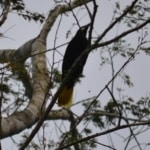
Also shocking was the number of birds in the Great Plaza. They weren’t immediately visible but the sound of their call dominated the plaza. We could hear hundreds of them cacking from the trees. Andres told us they were Montezuma Oropendola, a reddish brown bird with an orange-tipped beak and yellow feathered tail. We saw tons of them in the trees, their bright yellow tails making them stand out easily. They flew from tree to tree across the plaza. Their calls surrounded us everywhere we went.
Andres gave us a brief explanation of the layout of the plaza and the structures that surrounded it and then gave us some time to explore on our own. After a quick snack break, we headed up the stairs to the Central Acropolis. The Central Acropolis is made up of a series of courtyards, chambers, and temples and is believed to have been a residential area for the ruling family.
The Central Acropolis offered a respite from the crowds below and we enjoyed wandering in and out of the buildings by ourselves. It also offered stunning views of Temples I and II, the Great Plaza, and the North Acropolis.
When we were done exploring above the Great Plaza, we headed back down and crossed over to the North Acropolis. The North Acropolis includes the oldest structures in Tikal (some dating back as far as 600 BC) and is the burial ground for Tikal’s rulers.
There are many stelae (monuments) and altars found in front of the North Acropolis. Carved out of limestone, the tall stone monuments celebrated rulers and their great deeds. Often circular stone altars were laid directly in front of the stelae. Many of the stelae, altars, and carved stone walls in the North Acropolis were covered by small thatched-roof huts, protecting them from people and the elements.
Temple I (Temple of the Grand Jaguar) stands 155 feet tall and cannot be climbed, but it is impressive to view from its base. Like other Mayan temples, the pyramid has 9 levels, representing the nine levels of the underworld. The steps in all Mayan structures are extremely steep, but the great height of this structure makes them seem even more so. In 1982, two tourists fell to their death while climbing Temple I, and it has been closed to tourists ever since.
Temple I is the burial site of King Ah Cacao (also known as Jasaw Chan K’awiil I). His tomb was built first and then the temple was built around it by his son and successor. Built around 732 AD, Temple I was a departure from the traditional North Acropolis burial, signifying the importance of this ruler.
The crowds were starting to thin now, as we got closer to the park closing time and only those with sunset tickets were allowed to remain. We climbed a rickety wooden staircase to get to the top of Temple II where we were treated to stunning views over the Great Plaza. The early stages of the setting sun threw beautiful light and shadows over the Great Plaza.
As sunset was drawing nearer, we made our way over to Mundo Perdido (The Lost World). At the Great Pyramid, another steep set of wooden stairs was laid before us (this one more recently built and less rickety) and we took a breath before heading up.
The climb to the top was certainly worthwhile. From this vantage point, you could see out over the top of the jungle in all directions. Temples burst through the jungle treetops in several places, making us marvel at the fact that this entire city had been lost in the jungle for centuries.
The sky started changing colors. The slight cloud cover initially filled the sky with more blues and purples than oranges and reds.
There was a large crowd gathered on the viewing platform and an atmosphere of quiet contemplation filled the air. The sense of peacefulness was only broken by the occasional adorable giggles of a toddler-aged girl sitting next to us and the arrival of a group of police officers who posed for pictures for curious tourists. (We had seen these officers throughout the park and they seemed to be escorting someone around. Perhaps a Guatemalan celebrity?)
We stayed until the sun ducked below a low-lying group of clouds. It is extremely rare to get an unimpeded sunrise or sunset view in Tikal. There is almost always some degree of cloud cover. But the experience was still well worth it.
On our way out of the park, Andres led us back through the Great Plaza. It was virtually empty. He had the boys stand in a specific spot in the center of the plaza and then clap. The echo that bounced back off the temples sounded exactly like the call of the Resplendent Quetzal, a sacred Mayan bird and the national bird of Guatemala. It was truly amazing that the Mayans had designed and situated the structures around us to make that sound. I literally had to listen to it a dozen times before I was convinced it was the echo and not an actual Quetzal somewhere in the trees. It was amazing.
With nothing more than a small flashlight and our cell phones, we decided we needed to pick up the pace and get out of the park. Night falls quickly in the jungle and the darkness will surround you in an instant. Andres mentioned that he sometimes sees jaguars when returning from his sunset tours, a fact that was both exciting and terrifying.
We did not see any jaguars but did happen upon another fascinating creature. Jonathan spotted a tarantula in the grass. I was momentarily frightened by this discovery but Andres convinced us take a closer look. The tarantula was actually being carried away by a wasp!
The strange wasp-like creature was a Tarantula Hawk, and it was actually quite disgusting. The wasp stings the tarantula, which paralyzes it. It then drags the spider to its nest where it lays an egg on its prey’s abdomen. When the egg hatches, the larva digs a hole in the tarantula’s abdomen, crawls in, and eats the (still paralyzed) spider alive. It even knows enough to eat around the tarantula’s vital organs, thereby keeping it alive for as long as possible. The larva then becomes a pupa and finally exits the spider’s abdomen as an adult wasp. Yuck! I actually felt really sorry for the tarantula. What a long, tortured death!
So on that note, we finally made it out of the park and back to the hotel. We enjoyed our tour with Andres. With over 40 years of guiding experience, he was clearly extremely knowledgeable. He was not quite dynamic enough to always hold the boys’ interest and we had a little bit of trouble understanding him a few times. But overall we had a great tour and learned a ton. And he was super sweet with the boys, even offering to give JB a piggyback ride on the way out when he was getting tired. It was an extremely long day but Tikal definitely lived up to its reputation as the premier Mayan site and we were already glad we had made the trip.
